VERAMTEX
Eco-friendly Textile Finishing

VERAMTEX
Eco-friendly Textile Finishing


When the comfort of naturalness meets the ease of synthetic !
VERAMTEX specialised from the outset in the treatment of natural fibres using equally natural products: the Beau-Fixe ammonia treatment.
It can be applied to any vegetable fibre, such as cotton, line and regenerated cellulose.
The treatment causes the fibre to swell and the fabric to shrink widthways.
This has the advantage of stabilising the fabric when it is washed. The shrinkage is constant for fabric of the same type.
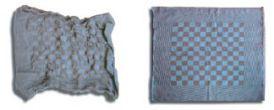
Which do you prefer ? ?
(These two fabrics have been washed and dried in the same way)
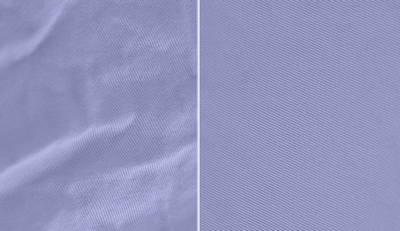
Our process was originally developed in France in the 1970s.
It soon became clear that it improved the dimensional stability of the fabric, and above all that it had a crease-resistant effect.
What’s more, the feel and look of the fabric are better.
These properties remain after washing throughout the life of the fabric.
The name Beau-Fixe was created by the founders and became established without being altered, so as to stress these two aspects : the fabric remains Beau (beautiful, pleasant) and Fixe (stable) after washing.
As the term "Beau-Fixe" in French also refers to fair weather, we have created a logo based on this theme, which passes from grey skies to sunshine.
ADVANTAGES
Dry crease recovery*
The fabric does not crease when worn. Imagine all the advantage of a crease-resistant fabric!
Easy care or non-iron*
The crease recovery obtained means that work clothes can be treated in a finishing tunnel. Ironing at home is no longer necessary or at least is much easier.
Elegance / Sheen
The articles look satin-smooth and more elegant. They feel softer and more alive.
Machine washing
The fabrics are more resistant and easier to care for. They dry more quickly. Linen can be machine-washed.
Dimensional stability*
The dimensional stability is greatly improved.
Better quality
The mechanical properties are greatly improved. Wear and tear due to rubbing is substantially reduced.
Feel
The fabric is softer after treatment. This is in stark contrast to mercerisation.
Colour
For fabrics that are to be piece-dyed, an increase in colour affinity of at least 20 % may be observed. The treatment is also suitable for dyed woven fabrics and even sometimes to deepen colours. If there is any doubt about the fastness of the colours in ammonia, a 20 cm sample is enough to carry out a laboratory test.
* Effects enhanced by the synergy between the Beau-Fixe treatment and appropriate resin treatment.
A UNIQUE PROCESS
A. Dipping in liquefied ammonia at -33°C
The fabric passes through a bath of pure liquid ammonia at its boiling point at atmospheric pressure. It remains immersed in the ammonia for several seconds, to enable maximum interaction between the fibre and the ammonia.
B. Elimination by evaporation
The fabric then passes over steam-heated cylinders so that the ammonia is eliminated by evaporation. The ammonia gas produced is collected by our recovery plants.
C. Rinsing in water
Residual ammonia on the fabric is eliminated by washing in softened water, without any additives. The ammonia solution produced is also taken to our distillation units.
D. Stenter frame drying
This machine has all the usual functions to control the humidity level, width, overfeed, etc, …
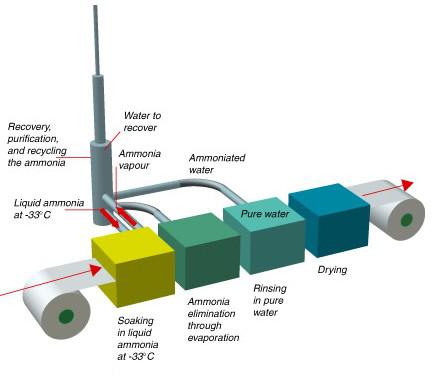
At the end of these four stages, the ammonia has been removed from the fabric entirely. There are no fears of unpleasant smells.
The gas and the ammonia solution are constantly recovered and recycled, making the process very eco-friendly.
Meanwhile the fibre has swelled evenly and undergone other physical transformations (degree of crystallinity, permeability, swelling, etc.).
This makes it perfectly receptive to other conditioning treatments: dyeing, resin treatment, various finishes, etc...
Stage B is in fact optional, with certain differences in terms of the results :
The first treatment is more suited for dyed yarn fabrics, white fabrics and fabrics that has already been dyed.
A treatment with unique properties
Beau-Fixe is an ideal environmental process
As an essential element in the creation of living matter, ammonia is widely found in nature. It is removed entirely from the textile substance after the treatment. It is then recovered, purified and recycled in the process without polluting either the air or water.
Veramtex has obtained dual Oeko-Tex 100 and Oeko-Tex 1000 certification for the Beau-Fixe process.
Beau-Fixe : perfectly reproducible
The simplicity of our process guarantees that it can be reproduced exactly.
The work is carried out:
Consequently, any variation in the speed of the machine will not have an adverse effect on the result
Beau-Fixe : a versatile process
Cotton, linen, ramie, regenerated cellulose. Beau-Fixe is the only process that can be used to treat knitwear and "warp and weft".
The fast Beau-Fixe service
Products can be collected and returned in seven days up to 1,000 km from Brussels.
The experienced Beau-Fixe team
Our team can advise you on how to adapt your finish to the new properties of the fibre.
COTTON
Combine the comfort of natural fabrics with the easy care of synthetics.
Most of our work involves treating fabric to make shirts.
The Beau-Fixe treatment is usually followed by a resin treatment to obtain the best results in terms of crease resistance. Without the ammonia treatment, the fabric would tear or deteriorate very quickly.
Dyed fabrics or not?
The treatment can be applied to all fabrics, whether they are yarn dyed, white or white to be dyed. The best time to carry out the Beau-Fixe treatment in the textile production chain depends on the desired results and the type of fabric.
Workwear
Here again, the combination of Beau-Fixe and cross-linking yields very good results. It becomes possible to obtain articles that are 100 % cotton whose "tunnel-finish" care is made much easier.
Velvet
The fabric remains lovely for longer and the pile is not crushed by washing.
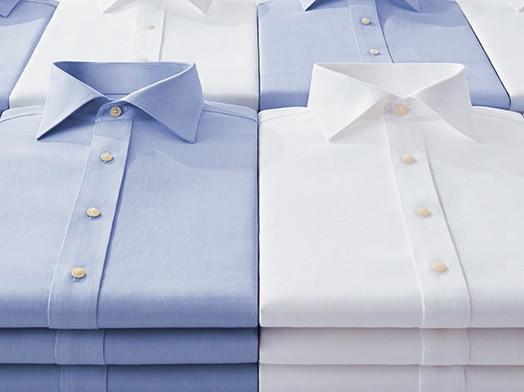

LINEN
Most consumers love linen, but are soon put off because it is difficult to take care of and creases very easily.
To the point where some people maintain that "linen is worn creased".
But if a minority of consumers make this an element of snobbery, the majority avoid linen because they feel it is too hard to iron.
With the Beau-Fixe treatment, we obtain easy-care linen, offering new opportunities for this fabric. The combination of a natural fibre, produced locally and pleasant to wear, with an eco-friendly treatment creating a product that is easy to care for opens up new outlets. The feel of the fabric in particular is improved thanks to Beau-Fixe.
We firmly believe in the future of this fibre and are seeking to involve dress designers in research into this new material and ways of bringing it to the fore.
A world of new ideas in linen!
DENIM
The trousers below have been washed 20 times : the difference in the appearance of the treated/untreated fabric is clear: the leg in treated fabric is smoother, less faded and longer than that in untreated fabric.
Beau-Fixe is a treatment that offers an advantageous alternative to mercerisation, particularly in terms of the limp handle and resistance of the fabric.
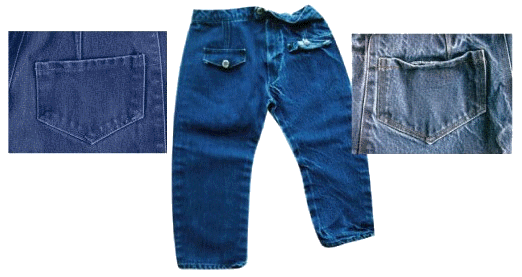
Others applications
Better gloss with metallic yarns
Metallic yarns (lurex type) remain intact during the ammonia treatment, which is not always the case during a mercerization in caustic soda. Therefore, the overall brightness of a cotton or viscose fabric containing such yarns can be increased.
Wash-Eco-Save
Clothing and other manufactured items, treated with Beau-Fixe, may receive "Wash-Eco-Save" label to highlight the benefits of treatment for end users: Ironing convenience, durability, improved appearance, softness, …
Knitted fabrics (Jersey, rib fabric and Interlock)
With certain precautions, it is also possible to treat knitted fabrics. The treatment makes them more elastic, improves the feel and reduces kinking.
Jersey has to be treated in a tube so that the edges do not curl over.
The heavier forms of knitwear, such as interlock and rib fabric can be treated in the open, widthways.
Other vegetable fibres such as bast fibres, hemp and ramie
The quality of the effects of the Beau-Fixe treatment always come as a surprise.
The effects are similar to those achieved with linen.
Technical fabrics
The Beau-Fixe treatment can give vegetable fabrics an unusually high level of resistance to rubbing and tearing, as well as speeding up drying times.
This means that they are able to meet the requirements of any specifications that may apply.
VERAMTEX s.a.
Head Office
Zoning GALILEI
Avenue Antoon van Oss, 1 - box 9
BE-1120 Brussels - Belgium
T : +32 (0)2 262.02.34
VAT-Nr : BE 0425.291.946
Privacy Policy - Cookies - Copyright © Veramtex 2020